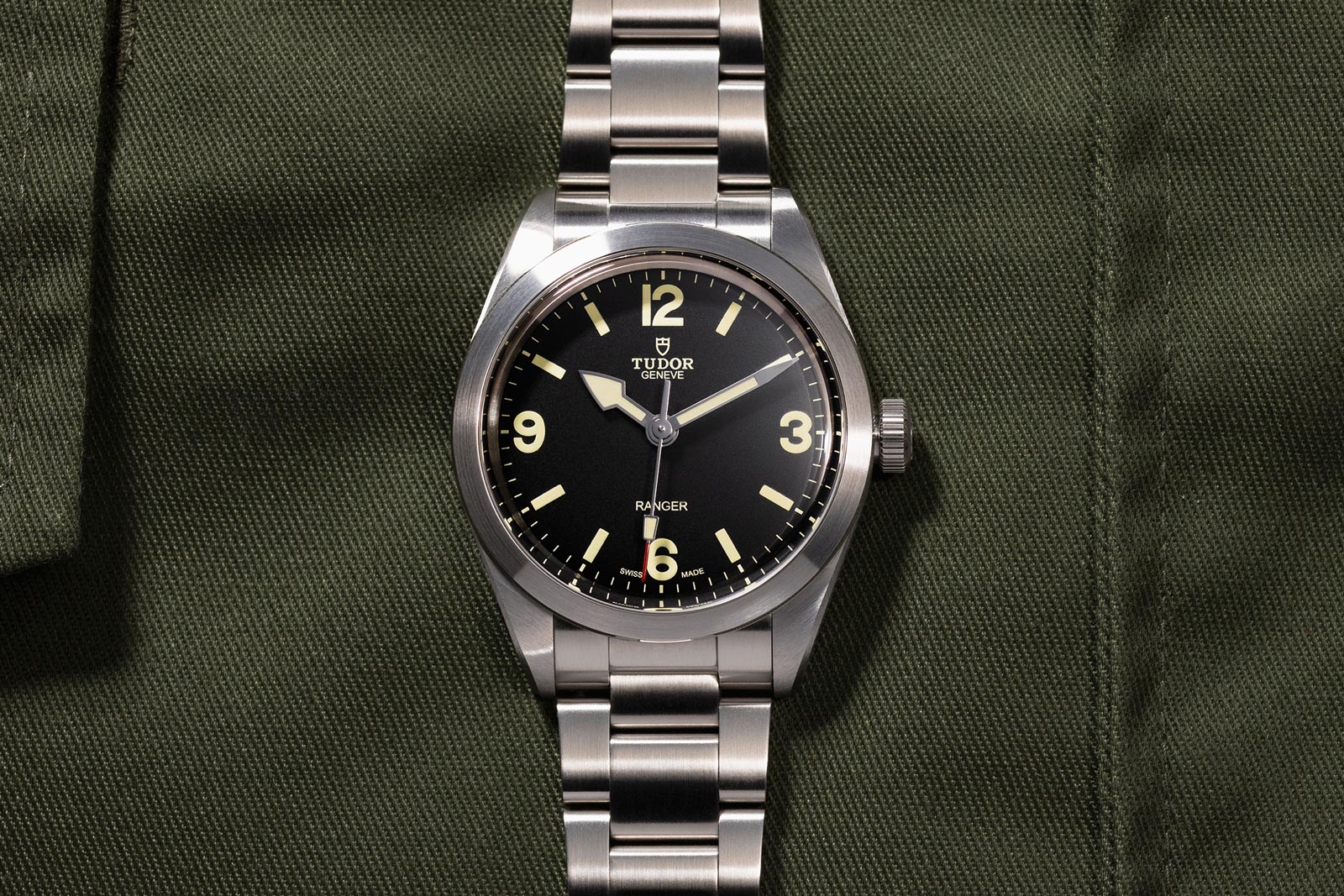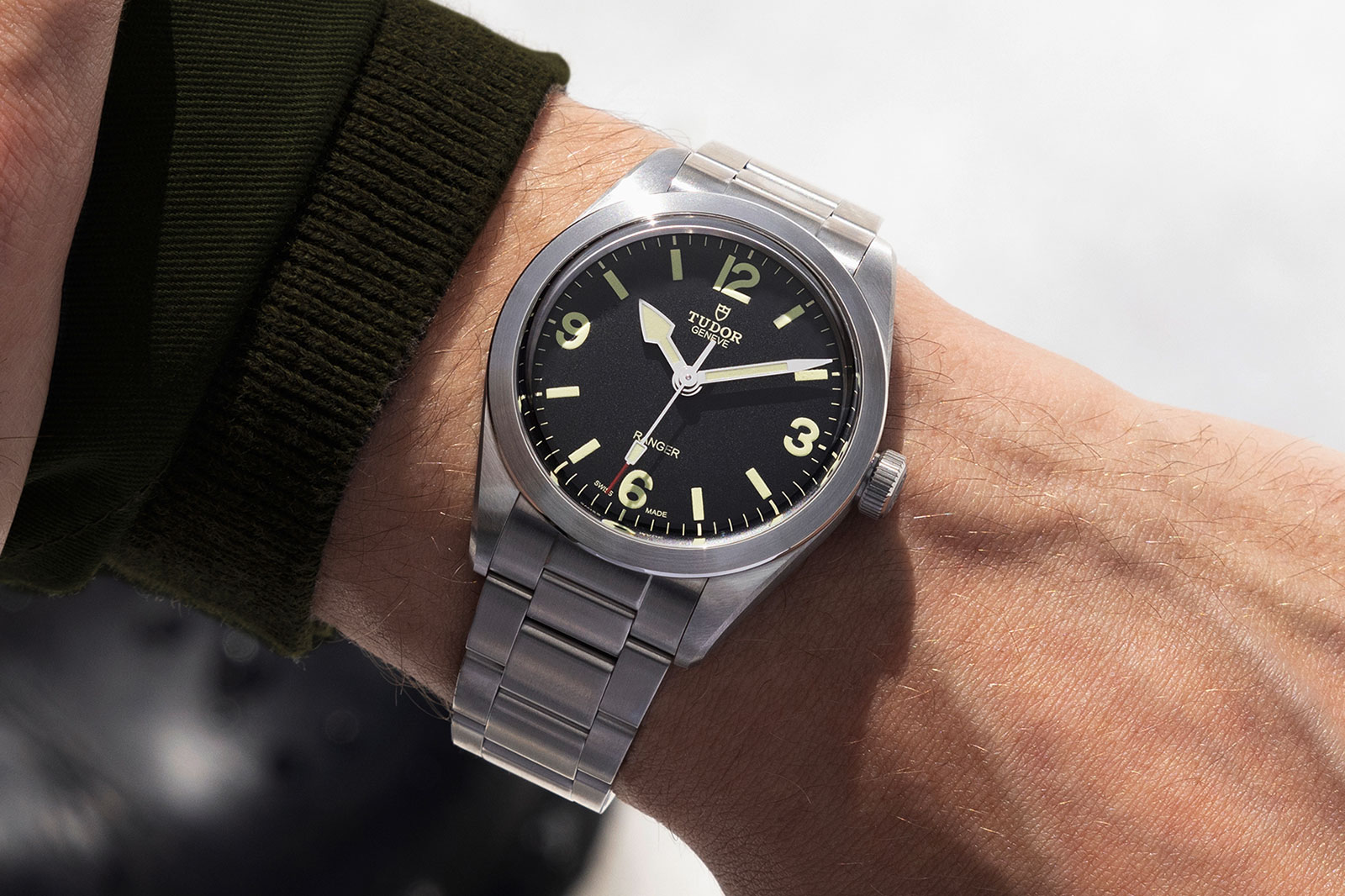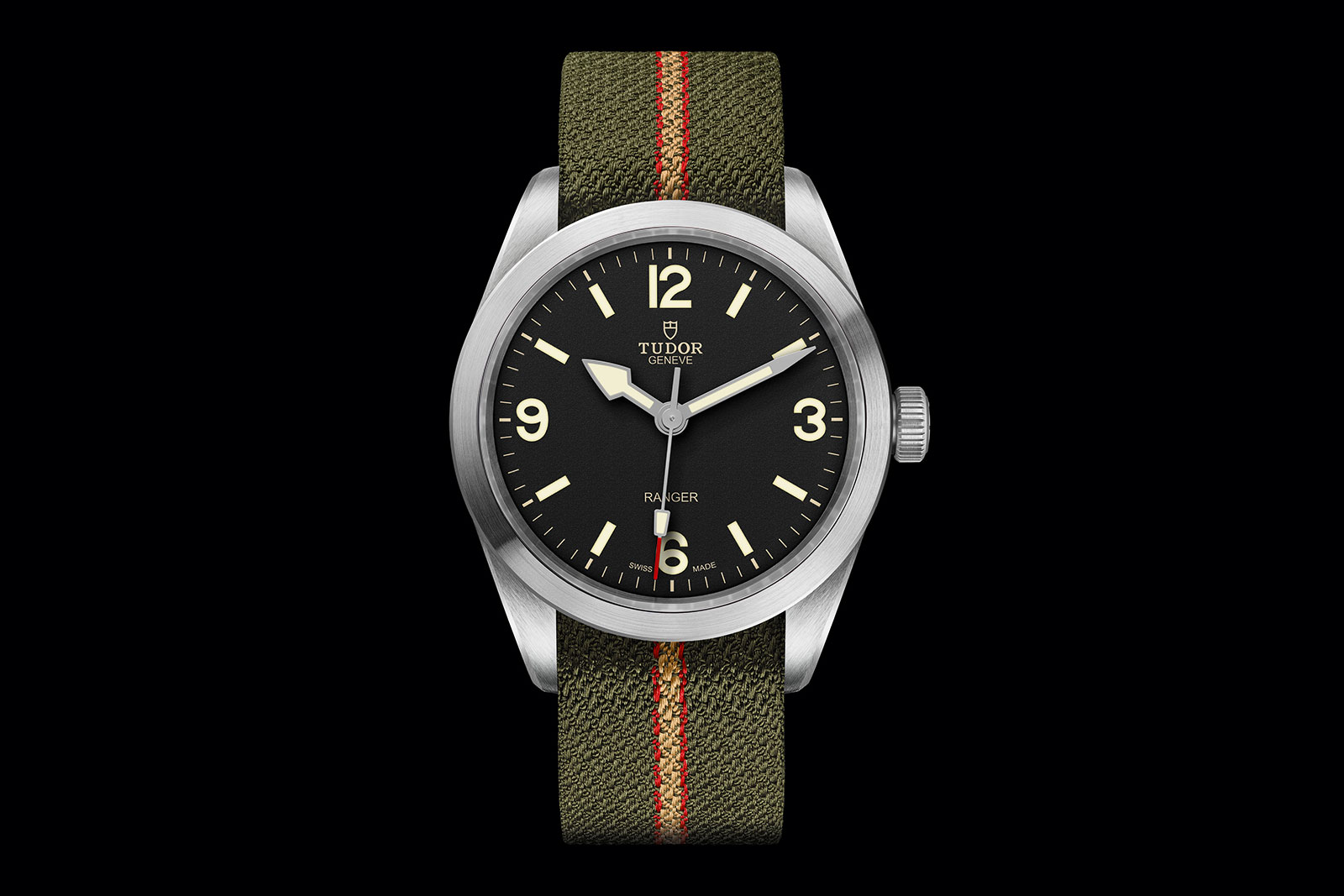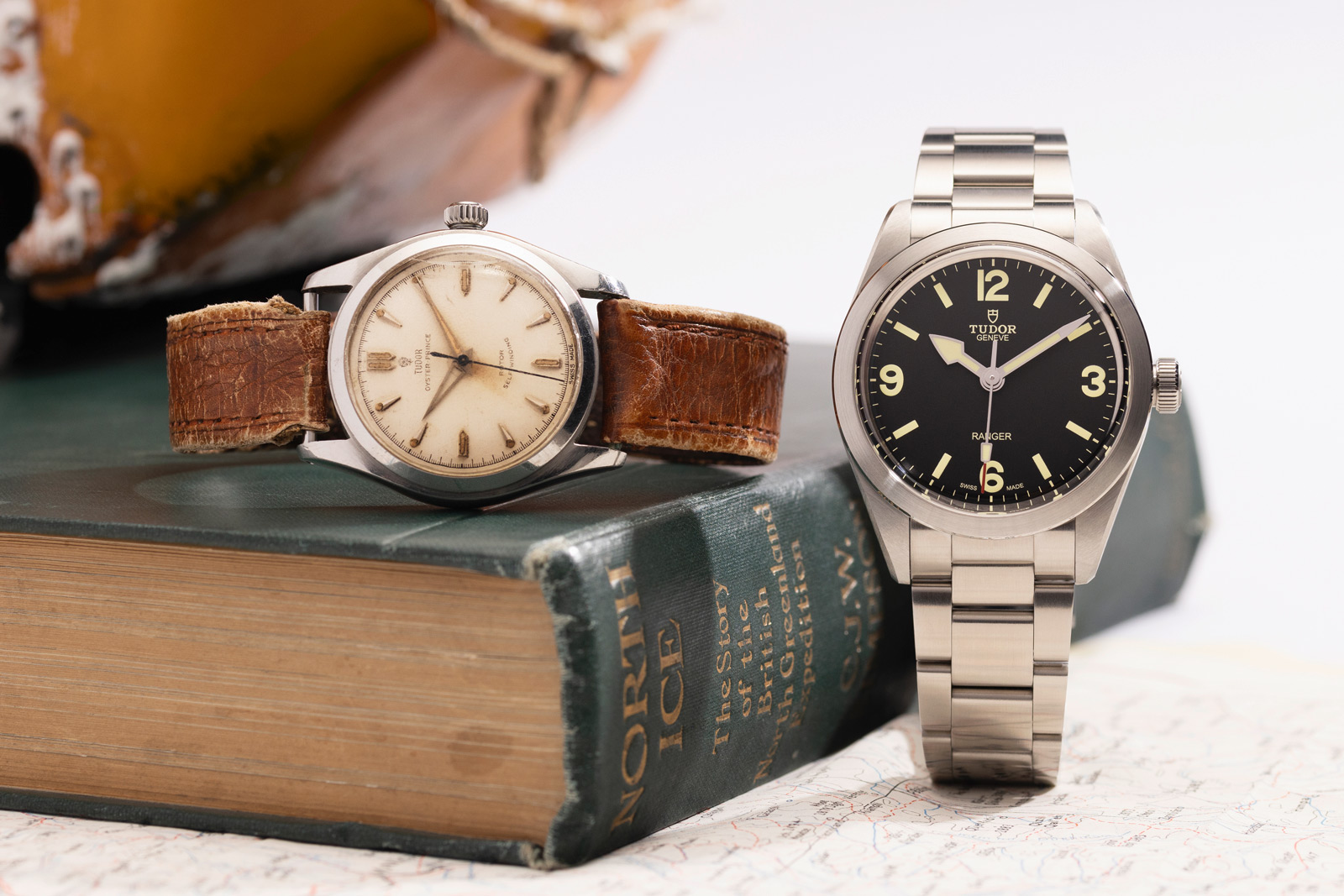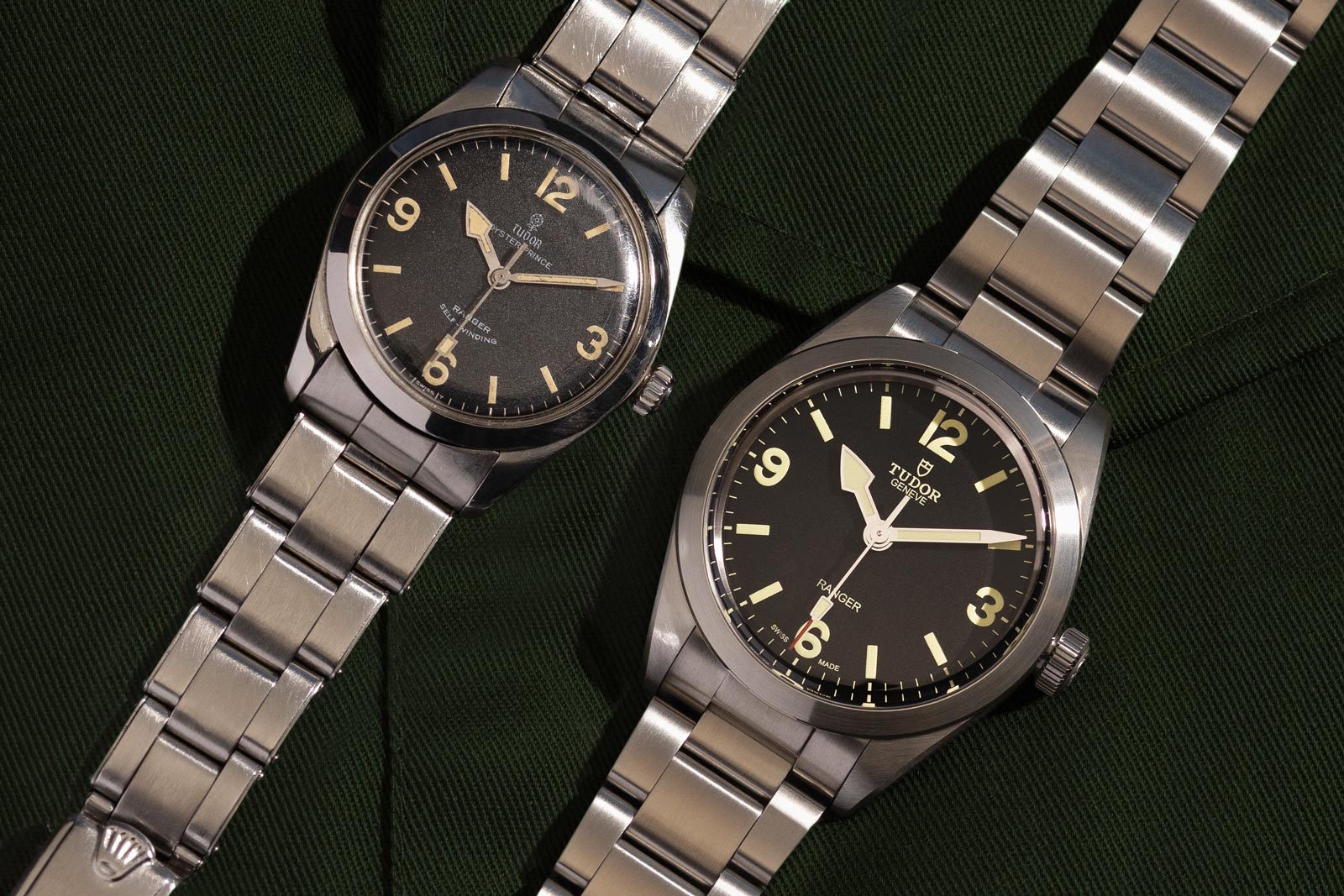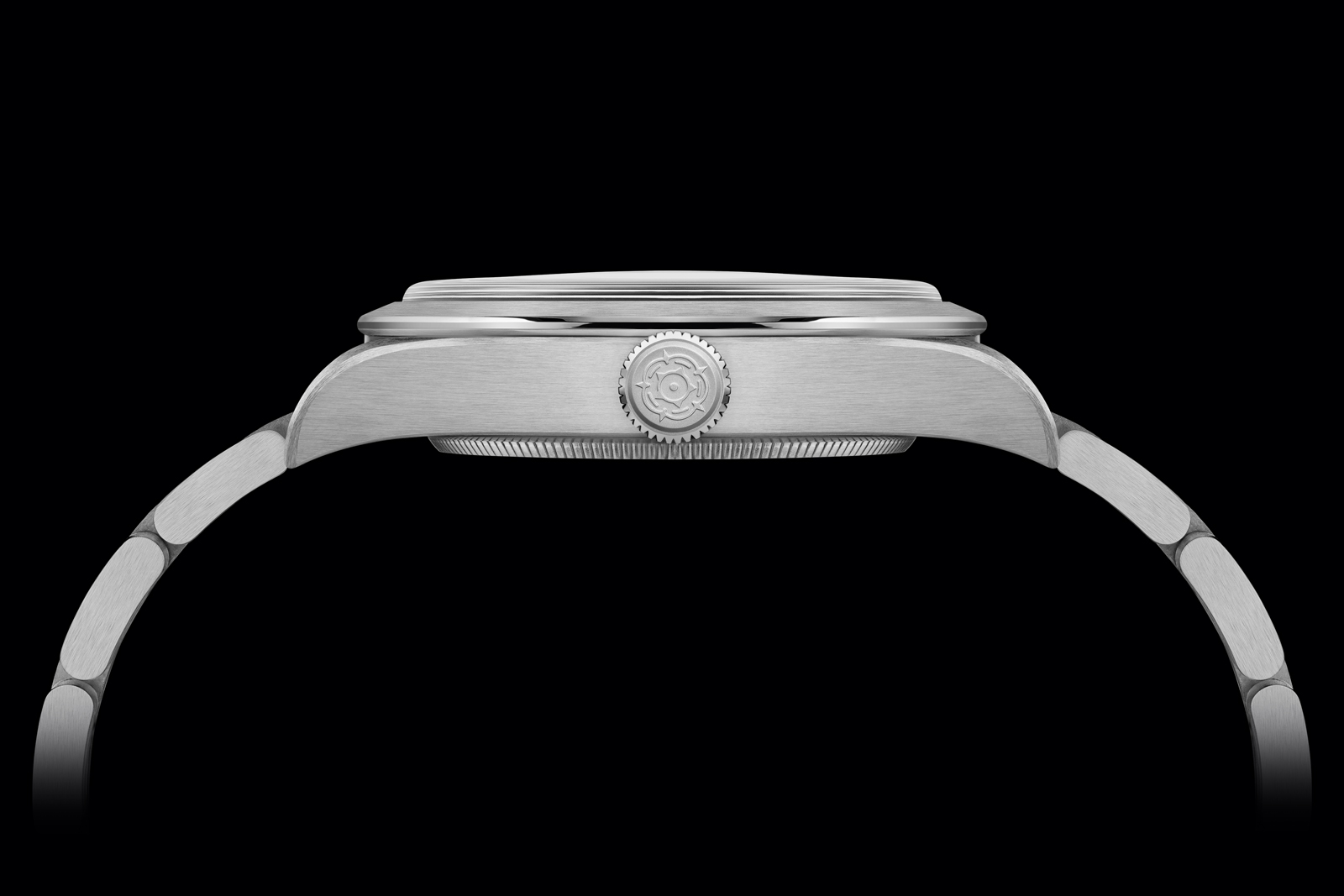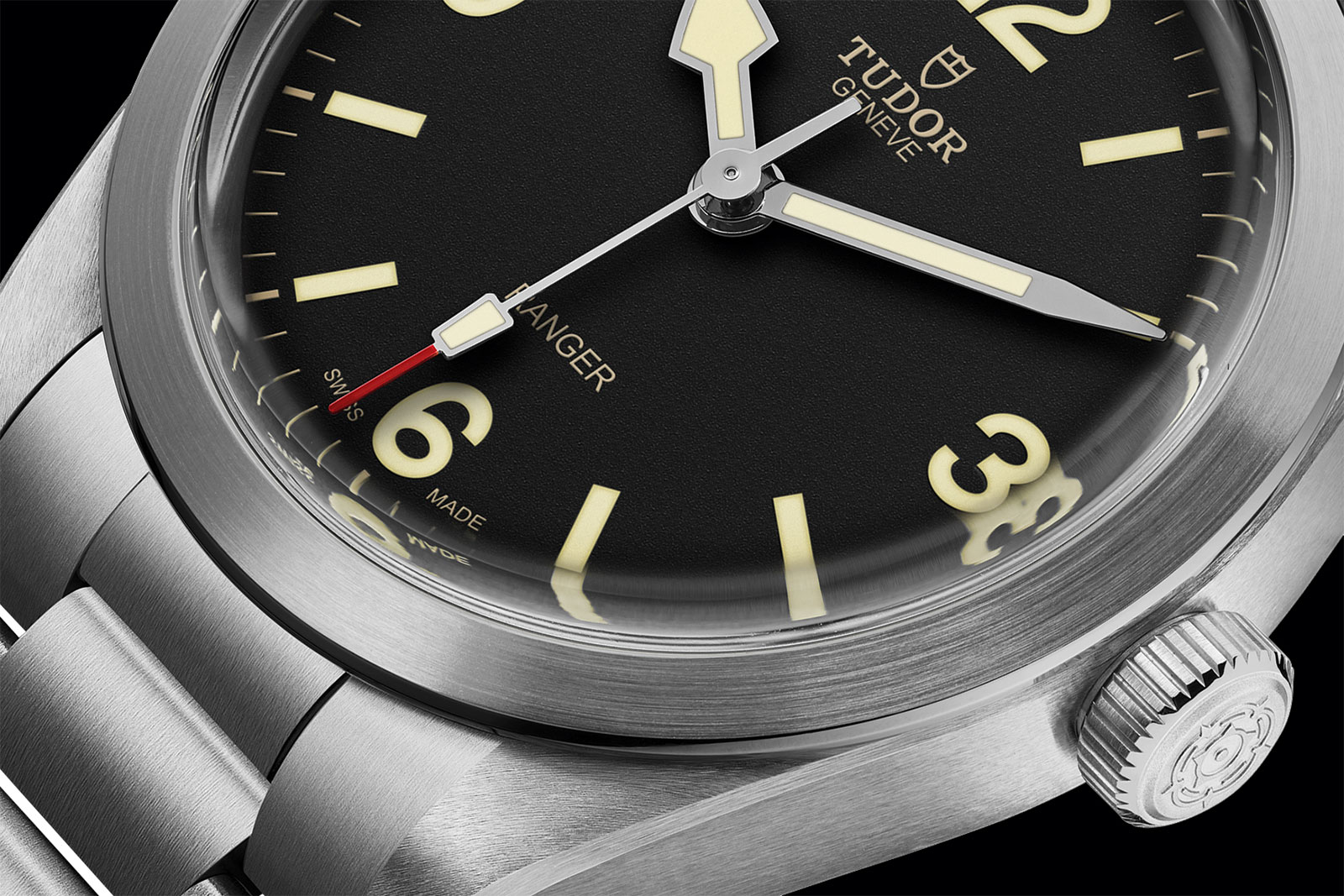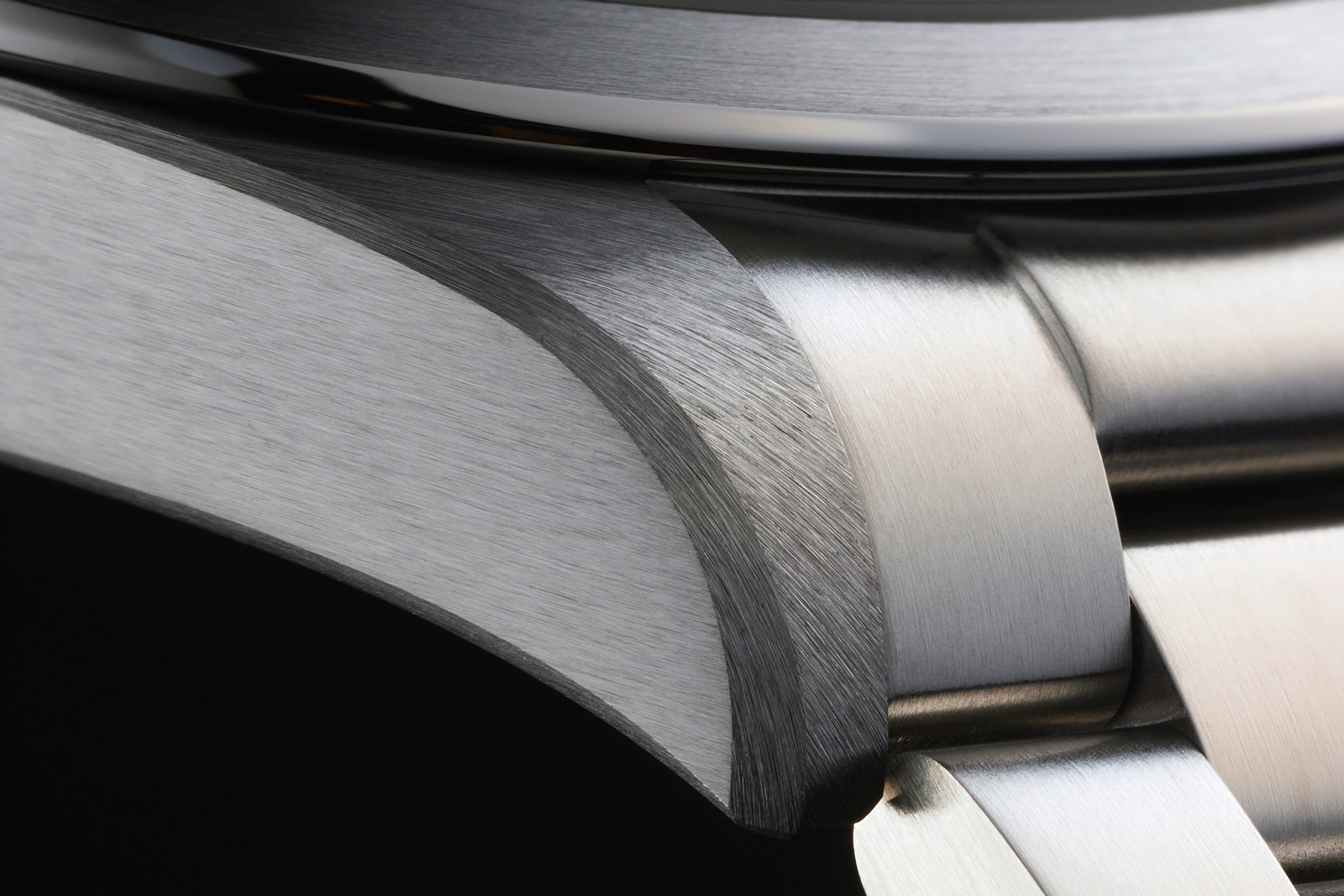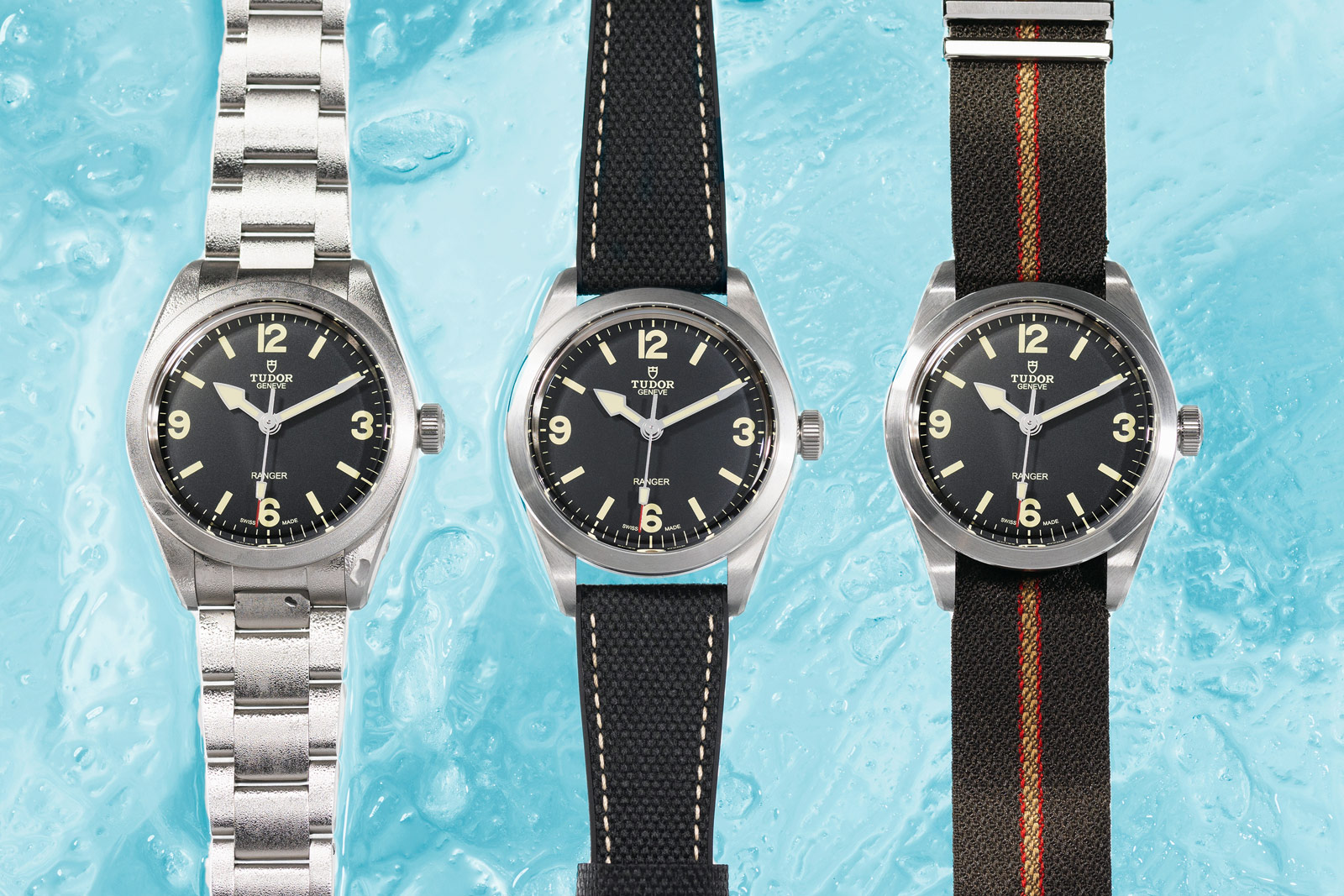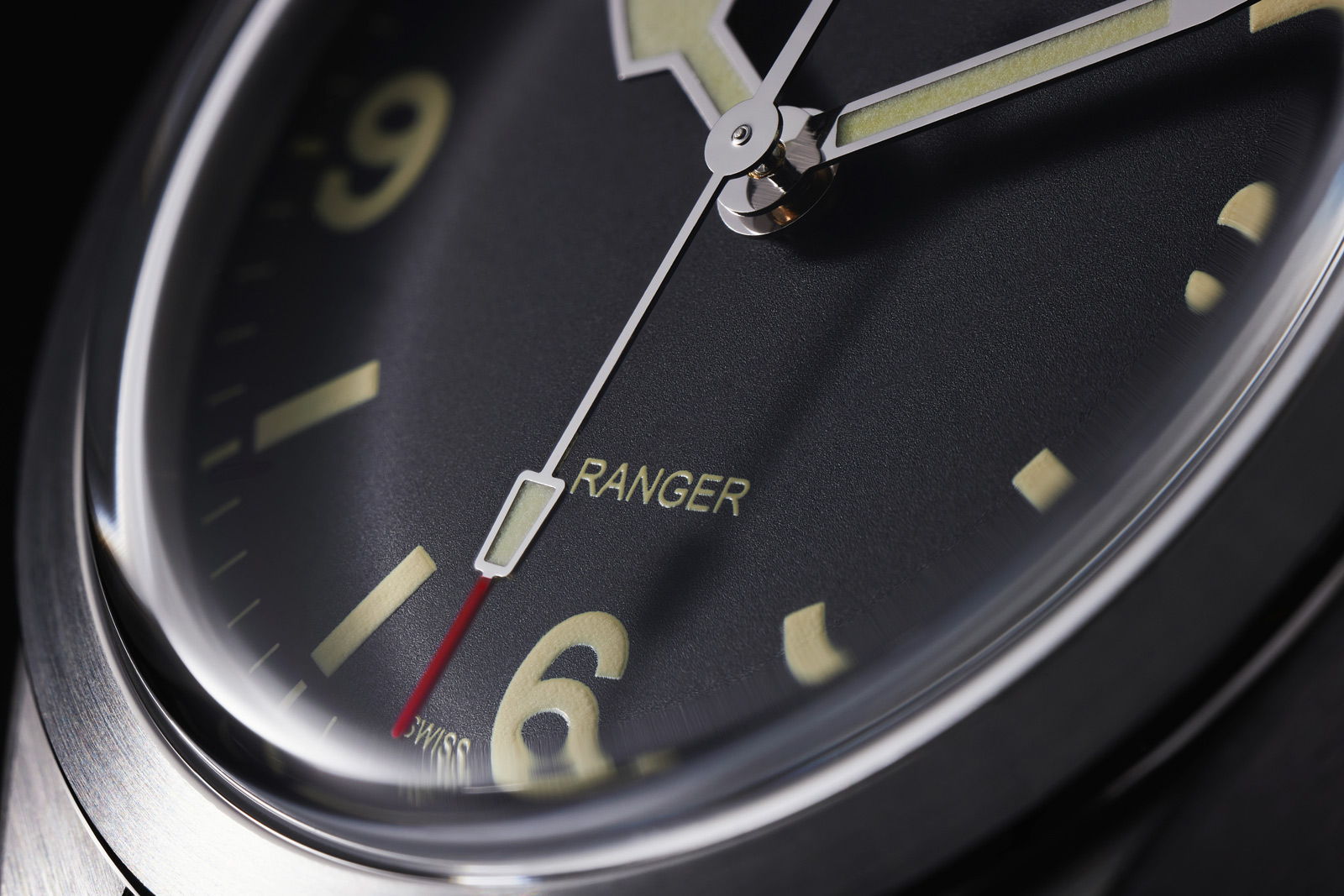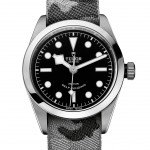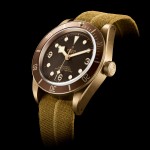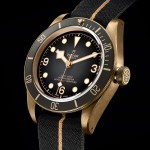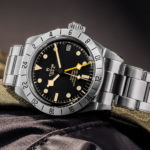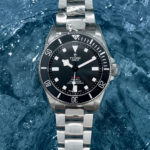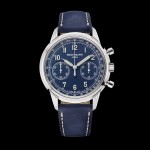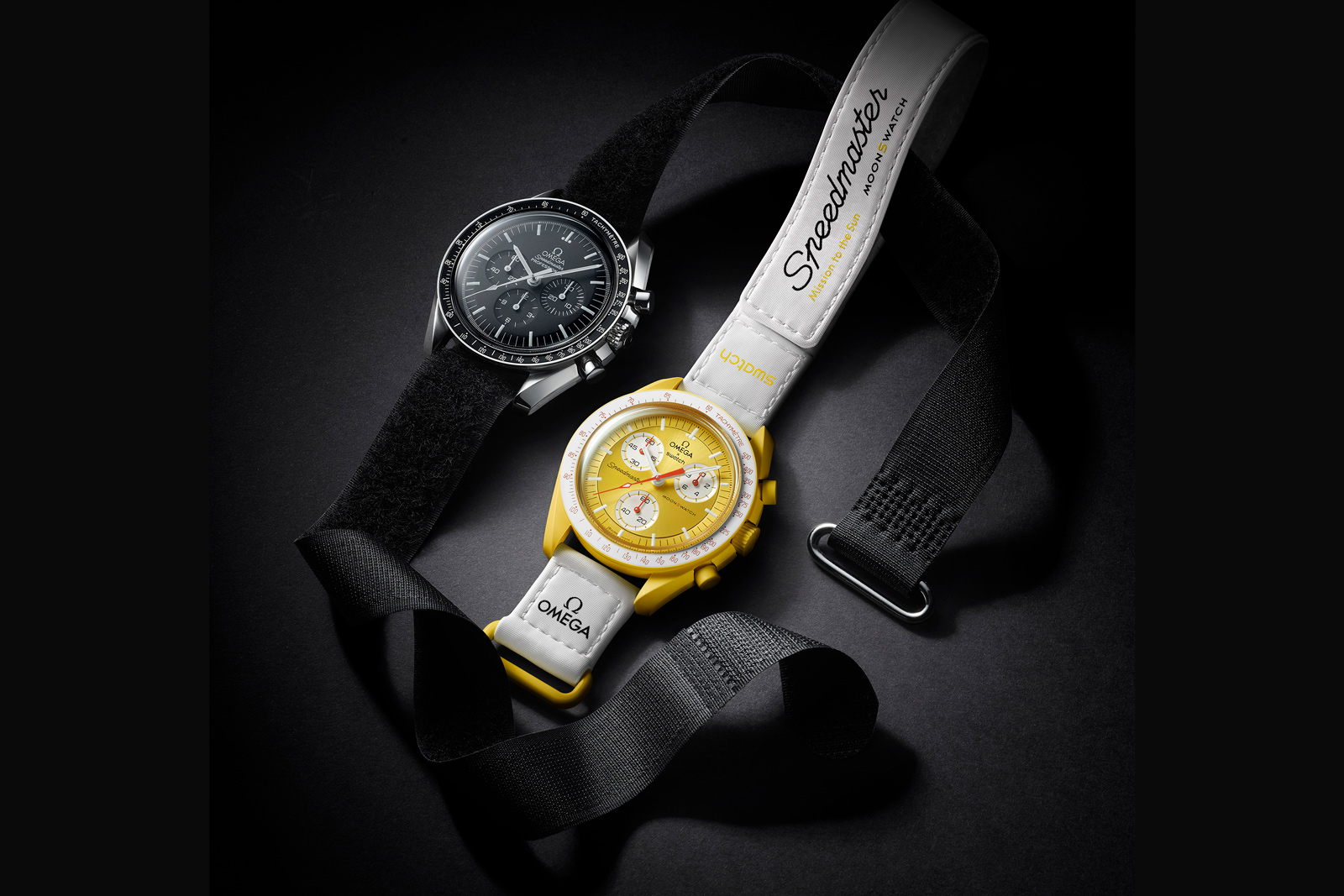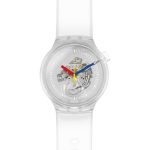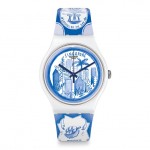With the MoonSwatch, Swatch and Omega pulled off a masterstroke with a collaboration that benefits both brands. The name of the product is a play on Omega’s iconic wristwatch – the Speedmaster Professional that was the first watch on the Moon in 1969 – while bringing to mind Swatch’s role in the revival of Swiss watchmaking in the 1980s.
The MoonSwatch launch created a craze amongst buyers Swatch has not experienced since the 1990s when it launched a series of limited edition of watches that took the form of various vegetables. Those produce-shaped watches so aroused the passions of buyers that they spent the prior night in front of Swatch stores around the world so as to be first in line the next day.
On March 26 this year, similar scenes were repeated once again, and once again around the world. The 110 Swatch stores selected to sell the initial batch of the MoonSwatch saw endless queues that started the night before. Depending size and location, the allocation per store was between 100 to over 1,000 watches, but each customer was limited to just two watches, a number that was swiftly reduced to one on the back of frenzied demand.
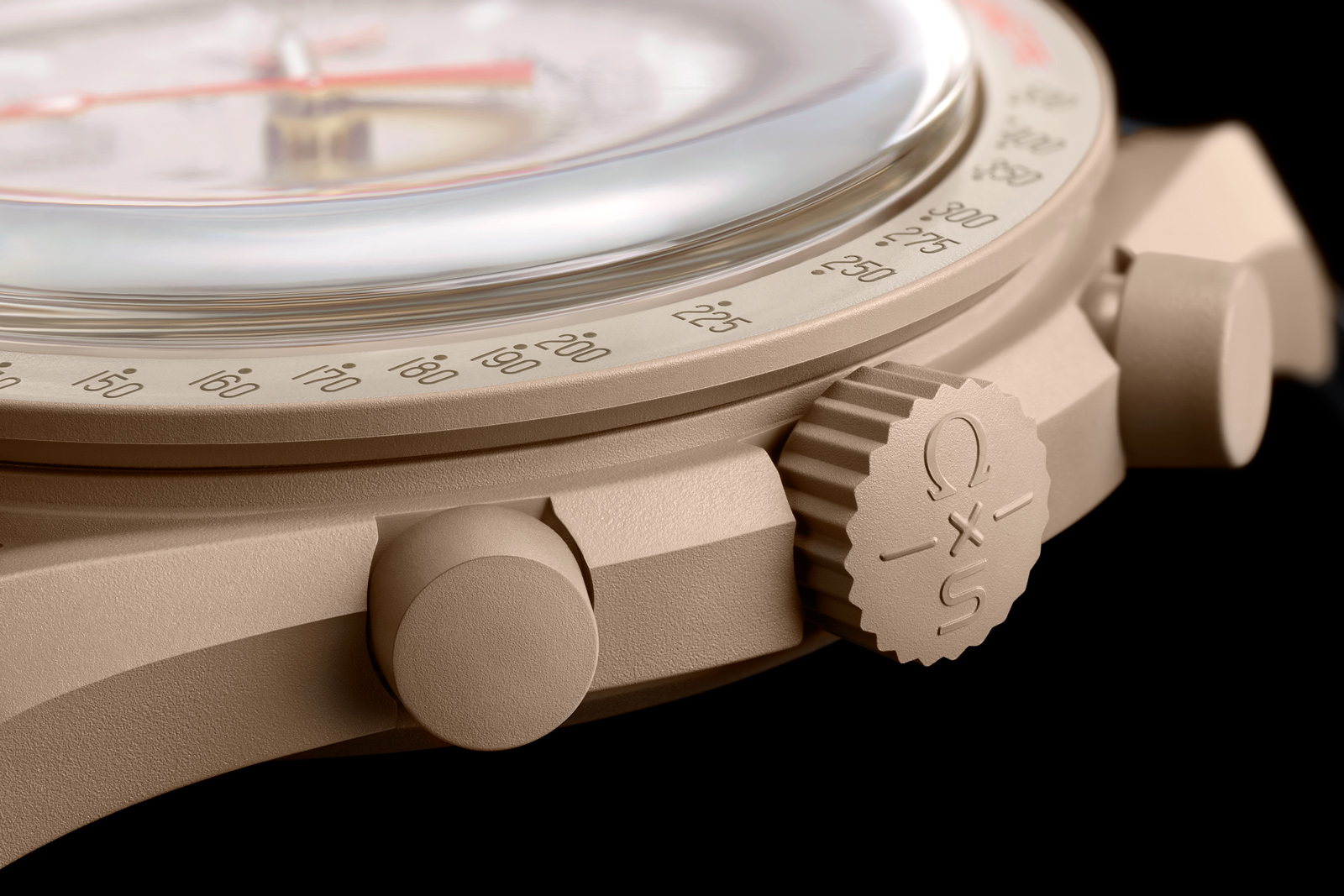
History repeats… in reverse
In the 1980s, Swatch helped saved the Swiss watch industry – and in particular its sister brand Omega – by making “Swiss made” cool again. Swatch proved it was possible to make a timepiece in Switzerland that had a trendy design and disruptive marketing while selling it at an extremely competitive price.
History is repeating itself forty years later, but in reverse. The MoonSwatch – which sells for CHF250 – will probably enable Swatch, a perennial loss maker for many years, to return to the black. The brand is now a long way from its heyday three decades ago.
At its height in the early 1990s, Swatch sold some 20 million watches a year, and the cumulative number since its launch is approximately 700 million. However, its annual sales have since declined to just three million units annually in recent years, giving the brand estimated yearly sales of just over CHF200 million – and an estimated annual loss of CHF150 million according to Morgan Stanley and LuxeConsult estimates.
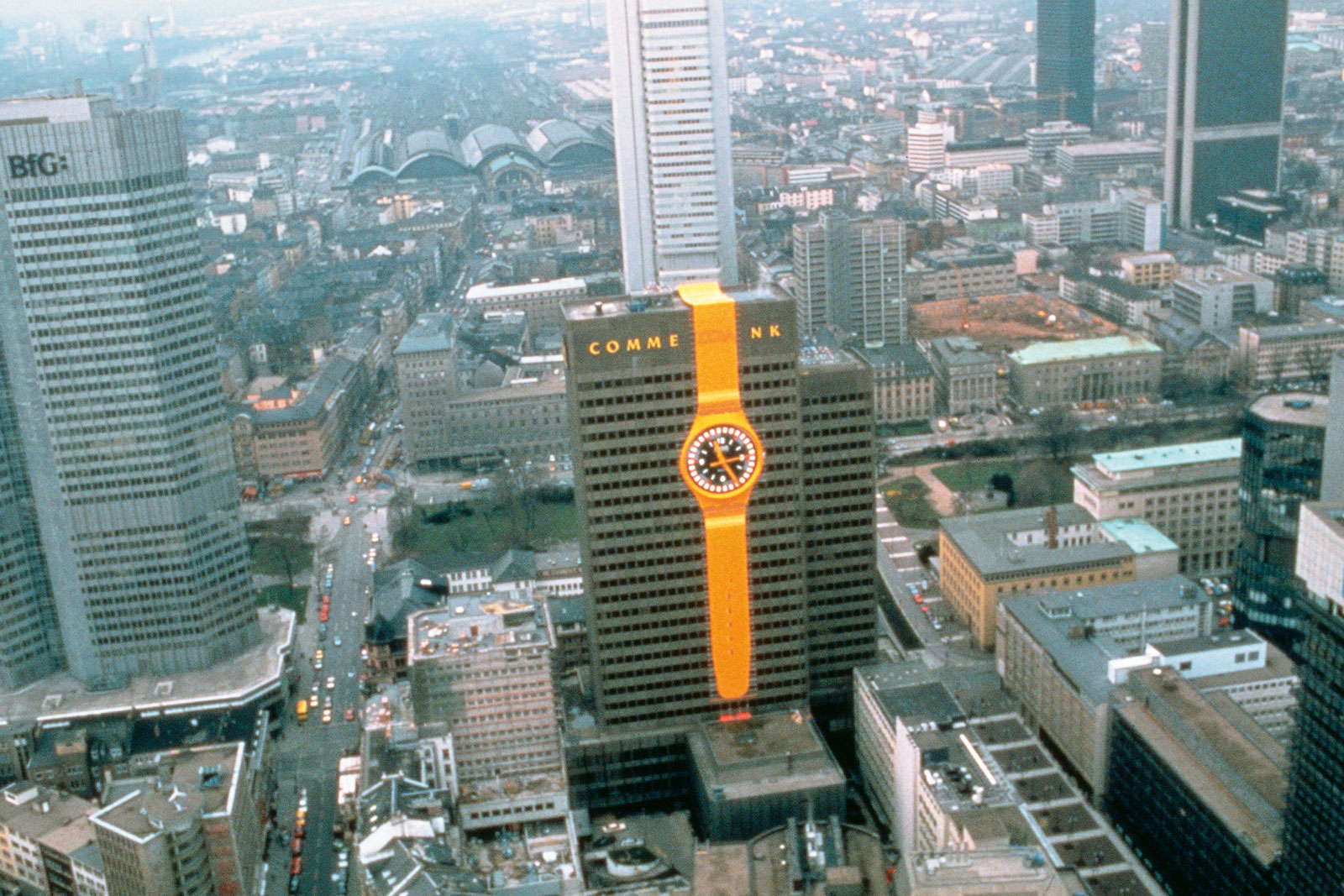
A publicity stunt of another era: Swatch draped the biggest Swatch watch ever on the Commerzbank building in Frankfurt in 1984
To put things in perspective, the Swiss watch industry as a whole exported 15.75 million watches in 2021 according to the national customs authority, which translates into a total value of just over CHF22 billion. Swatch, in other words, sells more watches than any other Swiss watch brand, but also sells watches that cost less than any of its peers. The average Omega, for instance, sells for almost 50 times the typical Swatch.
Bringing together Swatch and Omega today has given the former a boost thanks to the historical and technical legitimacy of the latter. At the same time, it brings Omega a younger clientele who may not yet be familiar with its iconic watch. According to insiders, traffic in both Swatch and Omega boutiques – clients want the MoonSwatch in the former and seek the original in the latter – have risen after the MoonSwatch launch, seemingly proven the equation is working for both brands.
A new family for Swatch
Swatch is a brand that lives and dies by variation on a theme, essentially the same watch in different colours and occasional material tweaks. The MoonSwatch continues this tradition with 11 models, each dedicated a specific space mission, including the emblematic and coveted “Mission to the Moon”, which is almost an exact visual copy of the Speedmaster Moonwatch.
The key difference between the MoonSwatch and the original is of course the quartz movement in the MoonSwatch versus the Lemania-based, hand-wound chronograph movement inside the Moonwatch. But another defining trait of the MoonSwatch is the case of Bioceramic, a bio-compatible composite that is two-thirds ceramic and one-third plastic obtained from castor oil.
Notably, the MoonSwatch is in fact a riff on two earlier products that met with a lukewarm reception, proving that it is greater than the sum of its parts. Swatch launched Bioceramic a year ago with the Big Bold Ceramic, a watch that was not a runaway success to say the least. In fact, shortly after that, Swatch launched a NASA edition watch, which also did not enjoy the mass hysteria generated by the MoonSwatch.
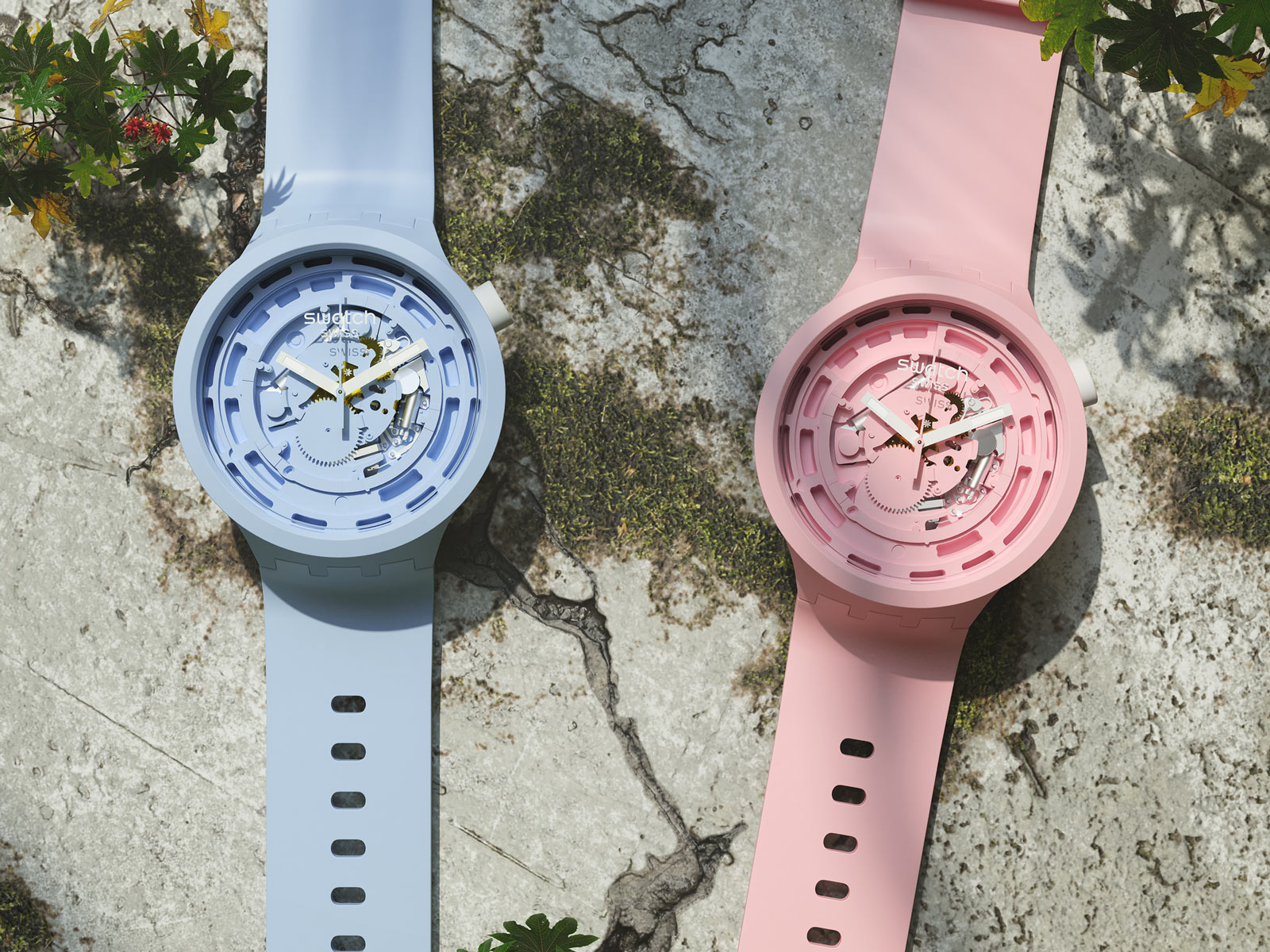
Big and bold but modest sellers
Breaking down the success story
While buyers of the MoonSwatch were unanimous in their response to its launch, the competitors of Swatch were equally unanimous in their criticism the product for the potential negative impact on Omega. The Biel-based brand has become the jewel in Swatch Group’s crown over the years and now contributes 53% of the group’s operating profit and almost a third of its sales according to estimates by Morgan Stanley and LuxeConsult.
Watch industry journalist Grégory Pons interviewed 17 chief executives of leading Swiss watch brands and they were unanimous in their opinion: they understood the utility of the collaboration for Swatch, but certainly not for Omega. All agreed that it trivialised an iconic product – the Moonwatch – by making it an entry-level product, a very bad idea in other words.
Rather than engaging in a shallow analysis that often encounter in an industry that is used to not questioning itself, I instead analyse the tangible and objective factors that underpin the success of the MoonSwatch.
Rule 1: Complementary and opposite
Swatch and Omega could not be more different. One is a historical brand founded in 1848 and premised on mechanical watchmaking, while the other a lifestyle brand launched in 1982 whose codes are colour, humour, and references to art in all its forms but usually pop. Swatch watches, in fact, are almost fashion: they are not made to last but are instead launched in seasonal collections as in fashion, making them ephemeral and very much of the now, although a handful have become collector classics.
At Omega, on the other hand, collections have been around for decades and some models have become bona fide icons. These include the Seamaster 300 m, best known as James Bond’s watch, and of course the Speedmaster Professional Moonwatch.
Swatch can afford to experiment with new materials and designs that do not necessarily follow any institutional logic, except that of constantly disrupting prevailing norms and catering to current fads. In contrast, Omega is an establishment brand that has to respect its traditional principle, above all the expectations of its customers. Here the two opposite forms of expression become complementary, creating the necessary tension for a successful and paradoxical product.
Rule 2: Combine talents
The Swatch Group has a unique competitive advantage: its industrial manufacturing capability that allows it to develop and manufacture a project like the MoonSwatch entirely in-house. The flip side of its industrial scale is, well, the need for scale. Its facilities have to run at capacity in order to be efficient and profitable. Even the substantial production volumes of Tissot, Longines and Omega – which together produce an annual total estimated at 5.5 million watches – are not enough to compensate for the drop in volume of Swatch that last year sold an estimated 3.2 million watches.
ETA, the Swatch Group’s primary movement maker, provided most of the technical solutions for the MoonSwatch, in particular the production line for the Bioceramic case that is wholly Swiss made. Omega took the lead in product development, which is evident in the details and coherence of the overall MoonSwatch design.
And finally Swatch itself provided its colourful house style and sales network. That said, one wonders if selling the MoonSwatch at Omega boutiques instead might have been a good way of upgrading the perception of the product and also bringing more young customers into stores they would not otherwise enter.
Rule 3: Warm up the audience before the main act arrives
Drop shipping accompanied by an announcement on social media is now the norm for the launch of high-end streetwear, especially for limited-edition sneakers that are often sold in a few dozen points of sale worldwide. The audience for such launches – typically very young – is accustomed to waiting in line. They can usually be seen outside the store early in the morning, having arrived the night before, already prepared to wait for hours to get the grail.
Swatch and Omega smartly stuck to the same formula and used all the means at their disposal to create buzz. Full-page advertisements were placed in daily newspapers worldwide in the run-up to the launch, along with announcements on social media – all cryptically indicating the date of March 26 while urging the reader to “change your Swatch”, or “Omega” in another version of the ad. As soon as the ads came out, the rumour mill went into overdrive and the buzz grew and grew.
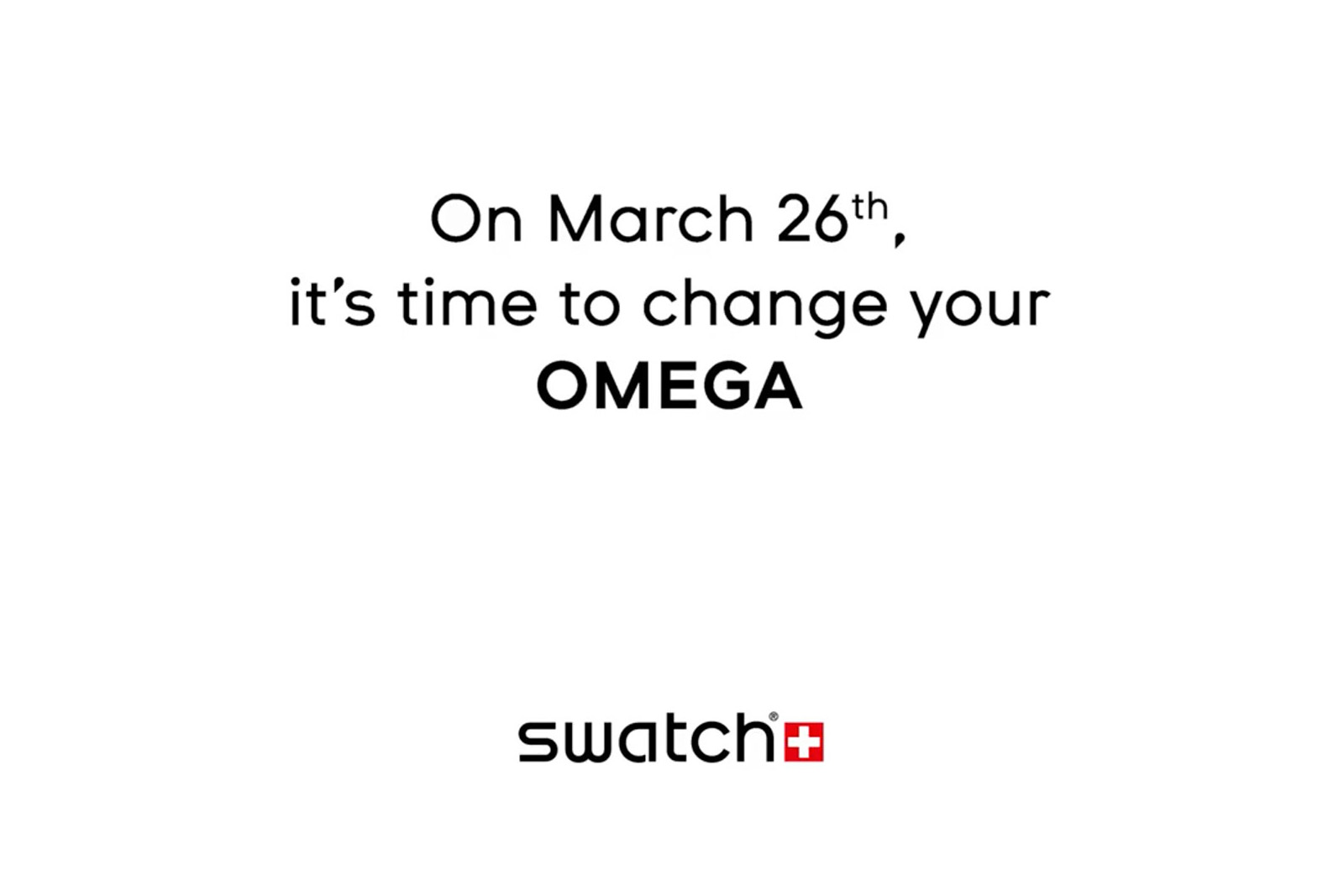
Rule 4: Selective distribution, adapted to the target clientele
In order to maximise the surprise, the MoonSwatch was sold only in select Swatch boutiques and in very limited quantities relative to the brand’s scale. Just 110 stores around the world each were tapped to sell the watch, with the biggest stories getting just 1,000 watches for the day.
That sparked off a fervour so intense that in Singapore, for example, customers camped out in front of the store in order to be the first through the door – scenes not seen since the glorious days of Swatch limited edition in the 1990s. Needless to say, the 110 stores sold out of their allocation in a very short space of time, even though Swatch had taken care to limit each customer to two pieces at most and later reduced it to one.
Notably, Swatch is sticking to the same sales channel even after the launch. In a recent interview with the watch blog Fratello, the Swatch Group chief executive Nick Hayek ruled out online sales for the MoonSwatch. He explained this surprising revelation by saying: “There is no emotion in buying online. It’s a carefully crafted Swiss -made watch, not a commodity. After the whole world had to stay at home for two years because of COVID, it was time to celebrate and bring people back to the streets, to meet each other and revive the traditional shops.”
We can all agree that the launch brought people out onto the streets around the world, but what about customers still confined to their homes, as in China for instance?
Rule 5: Sequence the effort
It is estimated that more than 50,000 MoonSwatches were sold over the launch weekend, with another 100,000 pieces having been sold in the time since.
But the desirability of the MoonSwatch remains intact insofar as the market was not flooded at the time of launch – the opposite was true in fact – and inventory remains sparse even three months after.
That has translated into a continued premium-to-retail on the secondary market. After an initial sharp spike to over CHF1,500, the value of the MoonSwatch on the secondary market has remained relatively stable, with most transitions happening at CHF600, equivalent to 2.5 times the recommended retail price.
That said, a staggered launch might have stretched out the initial frenzy further. The 11 models could have been launched three at a time, keeping customers curious about the upcoming versions. And that could have led up to the final launch of the “Mission to Moon” model on the anniversary of the first Moon landing on July 20, perhaps even making it an ultra-limited edition of 1969 pieces.
And going a step further, Swatch and Omega could have created a unique example of the MoonSwatch – one powered by the same cal. 3861 found in the actual Moonwatch – to be sold at the Only Watch charity auction taking place in 2023. Imagine the reaction to a “plastic” watch selling for over a million Swiss francs!

Perhaps MoonSwatch one day
Objectives achieved?
Swatch is a brand that was long losing momentum and one on the hunt for reasons to produce the volumes needed to keep its parent’s factories for movements, cases, and dials running at optimal capacity. Unsurprisingly, the MoonSwatch is of course extremely beneficial to the brand.
To understand what is at stake for Swatch, compare the annual production of Swatch during its glory days of the 1990s of more than 20 million watches per year and the 3.2 million watches sold in 2021 – a decline of almost 90%. According recent Morgan Stanley estimates, Swatch could sell up to 500,000 units of the MoonSwatch this year, which translates into revenue of CHF125 million. More crucially, the MoonSwatch brings with its a phenomenal gross margin estimated to be 90%, or CHF112 million, a number that would almost enable the brand to break even.
Taking into account the fact that the MoonSwatch has not yet been launched in China due to the pandemic-induced closure of stores and online sales have not yet begun (if they ever do), the maximum annual potential sales for the model is estimated to be one million units, equivalent to turnover of CHF230 million. That would more than double the brand’s current turnover, while boosting profitability and bringing much needed volume to the Swatch Group’s industrial capacity.
While the collaboration has significantly increased traffic to Swatch stores, it has also introduced the Speedmaster Moonwatch to a younger audience that was not necessarily familiar with Omega’s icon of watchmaking.

The Swatch store in front of its headquarters in Biel
And criticism
One of the greatest marketing and commercial successes of Swiss watchmaking in the last 20 years could have potentially been even more consequential, if some aspects had been dealt with differently.
The 11 model-strong product family includes “Mission to the Moon”, a copy of the original Omega in size and overall aesthetics. One wonders whether it makes sense to replicate Omega’s most iconic product and selling it for one-twentieth the price.
On the other hand, this copy – almost an exact replica but not exactly as enthusiasts will spot the differences at first glance – has enabled the customers of Swatch to discover Omega and real Moonwatch.
Also debatable is the fact that the MoonSwatch collection is regular production, at least for a period, as opposed to a limited edition, especially considering what might happen next.
In view of the success of this, we will surely see other similar collaborations, for example based on the Sistem51, the self-winding Swatch that is one of the most accomplished industrial movements in Swiss watchmaking. Other iconic designs from brands owned by the Swatch Group would be ideal candidates, or even those from brands outside the group.
My biggest criticism of the launch relates to Swatch’s marketing and communications, which did not make the product a priority before or after the launch. There was no specific campaign for the model apart from a few posts on the Swatch Instagram account and the pre-launch campaign in newspapers, raising the question of its relevance to consumers in Generations Z and Alpha, who no longer read much in print.
The golden rule of communication is repetition and consistency of message, so a few posts on social media are insufficient. And where the MoonSwatch was covered in the media, it was mostly in specialist watch media, at least in the initial days. The vast majority of them simply did not understood the impact of the MoonSwatch watch or the importance of its success. Some merely saw it as entertaining marketing while others think it will damage Omega’s prestige.

Crowds in front of the Swatch store at Marina Bay Sands in Singapore on the day of its launch. Image – hippodeige/reddit

Crowds in Geneva. Image – Andy Hoffman/Bloomberg
Regardless of the communication or lack thereof, there were crowds in front of Swatch shops, including a 500 m-long queue in front Swatch headquarters in Biel. But there were also fights between those in line and organised rackets in front of the stores, particularly in Geneva, where customers exiting the stores sold the watches to those in line. Better coordination and planning would certainly have made the launch a better experience for everyone.
Despite the hiccups, the MoonSwatch was almost a textbook example of a perfect launch that started with guerrilla marketing and then stole the show from the brands exhibiting at the Watches & Wonders trade fair that opened its doors a few days after.
And to conclude, I venture that more collaborations are on the horizon, including with establishment brands outside the Swatch Group. The story isn’t over yet.
Back to top.
